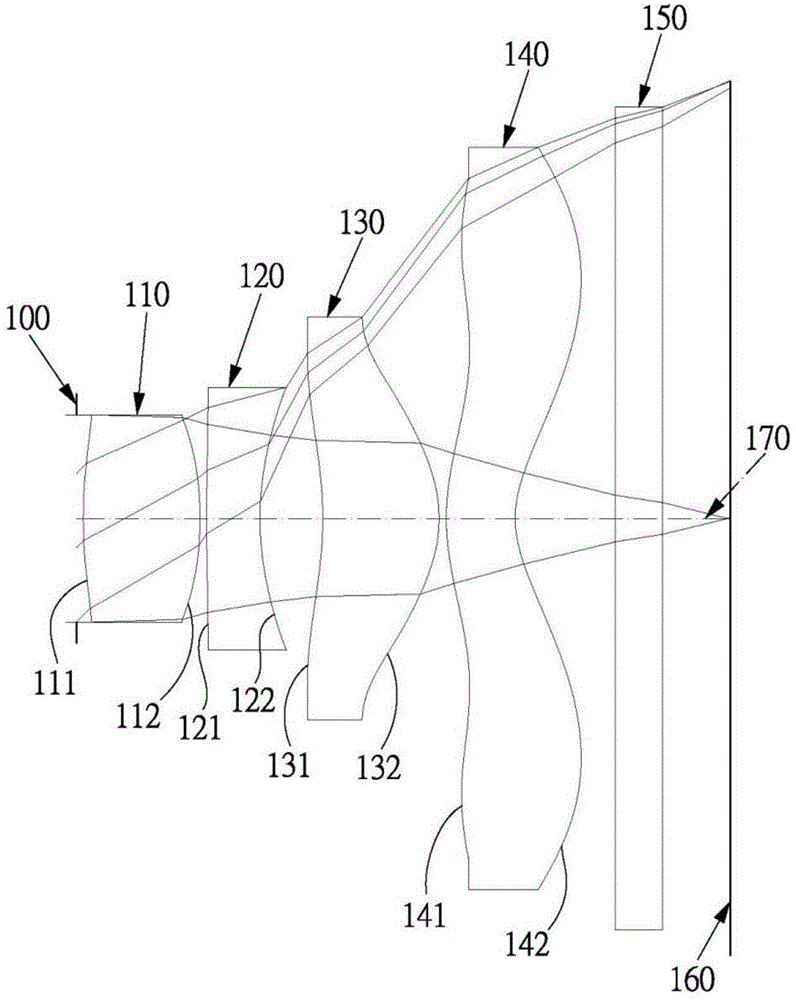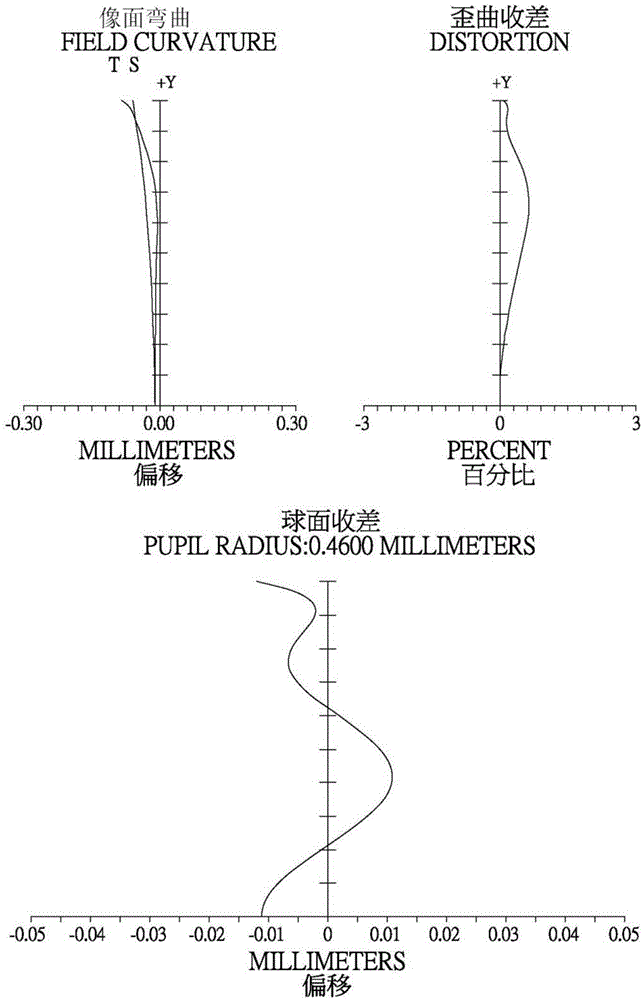Wide-angle imaging lens group
A lens group, lens technology, applied in optical components, optics, instruments, etc., can solve problems such as large aberration and complex lens design
- Summary
- Abstract
- Description
- Claims
- Application Information
AI Technical Summary
Problems solved by technology
Method used
Image
Examples
no. 1 example
[0054] Please refer to Figure 1A and Figure 1B ,in Figure 1A A schematic diagram showing a wide-angle imaging lens group according to the first embodiment of the present invention, Figure 1B From left to right are the spherical aberration, astigmatism and distortion curves of the wide-angle imaging lens set of the first embodiment. Depend on Figure 1A It can be seen that the wide-angle imaging lens set sequentially includes a diaphragm 100 , a first lens 110 , a second lens 120 , a third lens 130 , and a fourth lens 140 from the object side to the image side.
[0055] The first lens 110 has positive refractive power and is made of plastic material. Its object-side surface 111 is convex near the optical axis 170, and its image-side surface 112 is convex near the optical axis 170. The object-side surface 111 and the image-side Surfaces 112 are all aspherical.
[0056] The second lens 120 has a negative refractive power and is made of plastic material. Its object-side surf...
no. 3 example
[0089] Please refer to Figure 3A and Figure 3B ,in Figure 3A A schematic diagram showing a wide-angle imaging lens group according to a third embodiment of the present invention, Figure 3B From left to right are the spherical aberration, astigmatism and distortion curves of the wide-angle imaging lens set of the third embodiment. Depend on Figure 3A It can be seen that the wide-angle imaging lens set sequentially includes a diaphragm 300 , a first lens 310 , a second lens 320 , a third lens 330 , and a fourth lens 340 from the object side to the image side.
[0090] The first lens 310 has a positive refractive power and is made of plastic material. Its object-side surface 311 is convex near the optical axis 370, and its image-side surface 312 is convex near the optical axis 370. The object-side surface 311 and the image-side Surfaces 312 are all aspherical.
[0091] The second lens 320 has negative refractive power and is made of plastic material. Its object-side sur...
no. 4 example
[0112] Please refer to Figure 4A and Figure 4B ,in Figure 4A A schematic diagram showing a wide-angle imaging lens group according to a fourth embodiment of the present invention, Figure 4B From left to right are the spherical aberration, astigmatism and distortion curves of the wide-angle imaging lens set of the fourth embodiment. Depend on Figure 4A It can be seen that the wide-angle imaging lens set sequentially includes an aperture 400 , a first lens 410 , a second lens 420 , a third lens 430 , and a fourth lens 440 from the object side to the image side.
[0113] The first lens 410 has positive refractive power and is made of plastic material. Its object-side surface 411 is convex near the optical axis 470, and its image-side surface 412 is convex near the optical axis 470. The object-side surface 411 and the image-side Surfaces 412 are all aspherical.
[0114] The second lens 420 has a negative refractive power and is made of plastic material. Its object-side s...
PUM
 Login to View More
Login to View More Abstract
Description
Claims
Application Information
 Login to View More
Login to View More - R&D
- Intellectual Property
- Life Sciences
- Materials
- Tech Scout
- Unparalleled Data Quality
- Higher Quality Content
- 60% Fewer Hallucinations
Browse by: Latest US Patents, China's latest patents, Technical Efficacy Thesaurus, Application Domain, Technology Topic, Popular Technical Reports.
© 2025 PatSnap. All rights reserved.Legal|Privacy policy|Modern Slavery Act Transparency Statement|Sitemap|About US| Contact US: help@patsnap.com



